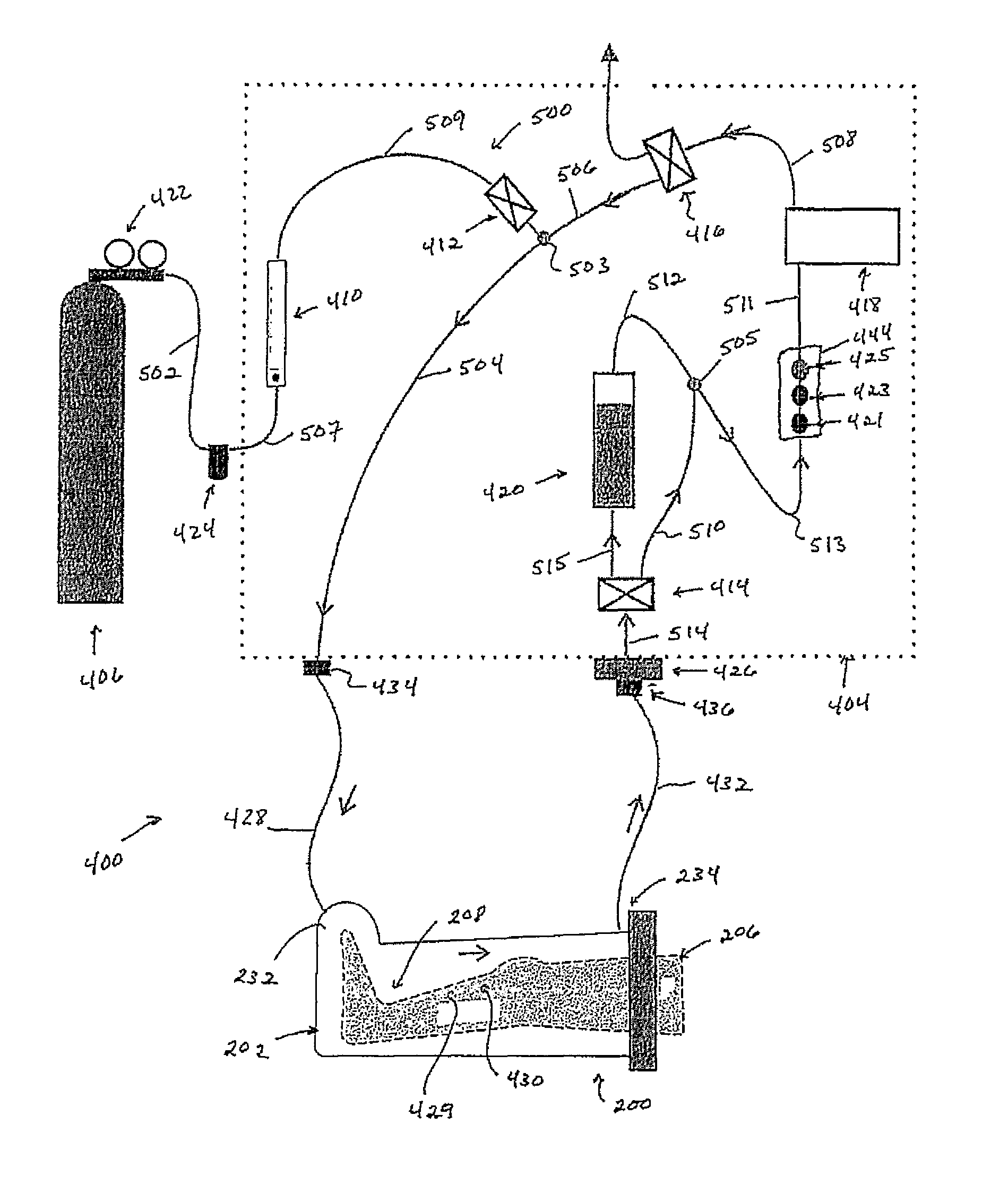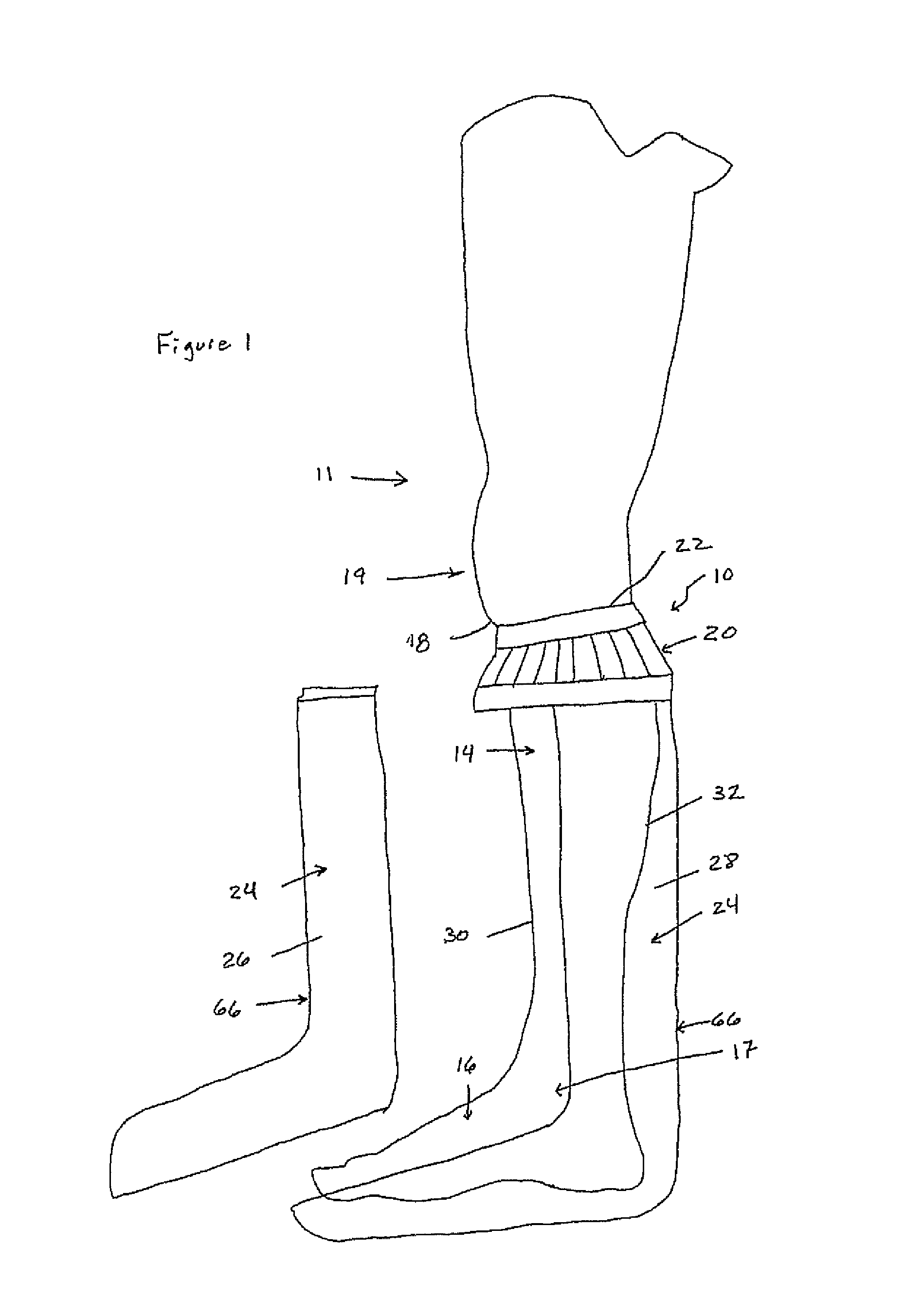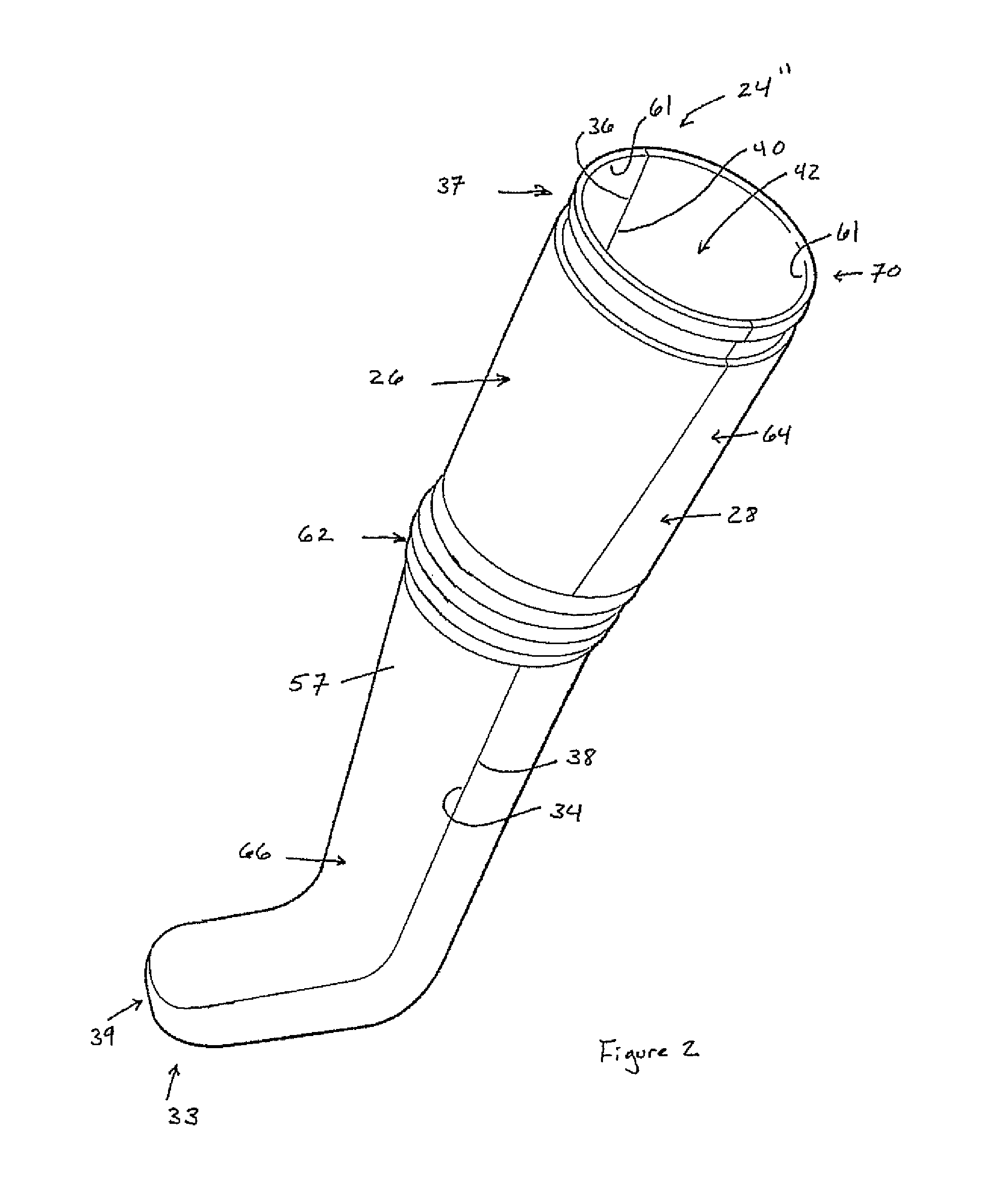Assembly for tissue oxygenation and method of use
a tissue oxygenation and assembly technology, applied in the field of medical devices, can solve the problems of limited use, cumbersome treatment options, oxygen toxicity to the central nervous system, etc., and achieve the effects of increasing tissue oxygen concentration, promoting healing, and increasing tissue oxygenation
- Summary
- Abstract
- Description
- Claims
- Application Information
AI Technical Summary
Benefits of technology
Problems solved by technology
Method used
Image
Examples
Embodiment Construction
[0028]Supplying oxygen to skin tissue in need of oxygen for therapeutic purposes, such as in the case of skin lesions in diabetic foot ulcers, peripheral vascular diseases, and other situations where the circulation and / or the source of oxygen is compromised, is essential to wound healing. The TOD of the present invention increases the amount of oxygen over a target site of skin tissue by taking advantage of Fick's First Law of Diffusion (“Fick's Law”), along with the fact that skin tissue is semipermeable to oxygen. Were Fick's law to be applied to the function of this dynamic TOD, and, hence upheld, this would further prove the ability of the newly designed protocol to increase skin oxygenation. The direction of the oxygen rate of diffusion can be determined using Fick's equation, where the volume of oxygen flow moving across the skin per unit of time (VO2) is directly proportional to the area of the skin involved and to the difference in the partial pressures of oxygen between th...
PUM
 Login to View More
Login to View More Abstract
Description
Claims
Application Information
 Login to View More
Login to View More - R&D
- Intellectual Property
- Life Sciences
- Materials
- Tech Scout
- Unparalleled Data Quality
- Higher Quality Content
- 60% Fewer Hallucinations
Browse by: Latest US Patents, China's latest patents, Technical Efficacy Thesaurus, Application Domain, Technology Topic, Popular Technical Reports.
© 2025 PatSnap. All rights reserved.Legal|Privacy policy|Modern Slavery Act Transparency Statement|Sitemap|About US| Contact US: help@patsnap.com



